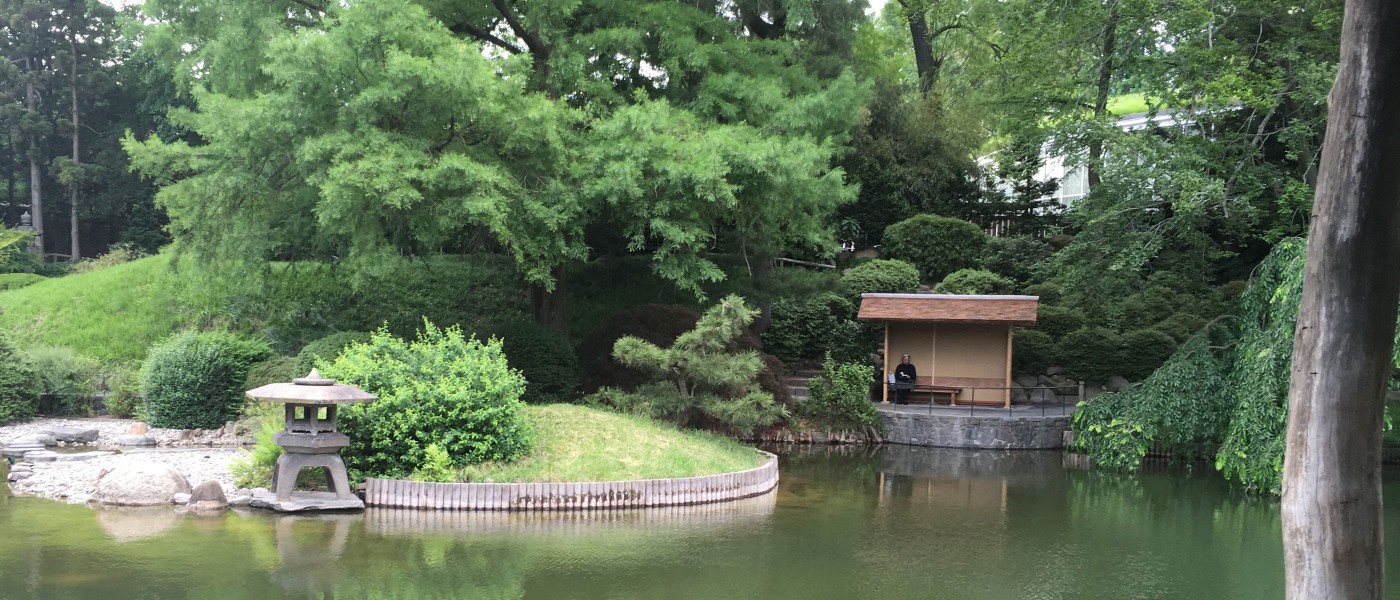A New Machiai: A Traditional Japanese Waiting Bench
Be sure to visit the Japanese Hill-and-Pond Garden to see the new machiai designed by master builder Paul Discoe.
A machiai is a traditional Japanese covered waiting bench usually placed before the entrance to a tea garden. Machiai are considered places of respite, where guests can transition and prepare for a tea ceremony.
This machiai makes use of materials that Discoe saved from his work on a large Japanese village complex in Northern California. “I had some beautiful things tucked away waiting for the right opportunity,” says Discoe.
A master Japanese builder who studied Buddhist temple building in Kyoto, Discoe says he based the structure’s design on a similar outbuilding at Katsura Imperial Palace in Kyoto.
Craftsmen from Discoe’s studio constructed the machiai using six different kinds of wood (five American tree species and one Japanese) and traditional all-wood joinery techniques. Posts and beams are Port Orford cedar sourced from the Oregon coast and the bench is American elm that was salvaged from a street tree in Oakland. The lining of the roof is made from sugi (Japanese redwood) bark.
Carpenters Lucas Benjamin and Jason Forster trained in Japan, as did Angela Francis, the sakin (master plasterer), who crafted the walls with a mixture of Japanese clay and straw.
“Brooklyn Botanic Garden is very fortunate to have engaged the skills of this phenomenally talented team,” says BBG President Scot Medbury. “Paul was an especially generous partner on this project, and we are deeply grateful for all he has contributed.”
The machiai is situated along the path on the northern shore of the pond. This location is true to Takeo Shiota’s original design for the garden, which opened to the public in 1915. Shiota, in creating a garden for American visitors, included a variety of elements drawn from different Japanese garden traditions like the Shinto shrine, torii gate, and viewing pavilion.
“If you enter the garden from the back gate and walk left, you’ll come to the machiai on the path as it leads to the pavilion, which would help give you an authentic sense of how it can be a place of transition for a tea ceremony,” says Brian Funk, curator of the Japanese Garden.
This waiting bench is the fourth in the garden’s 100-year history.


